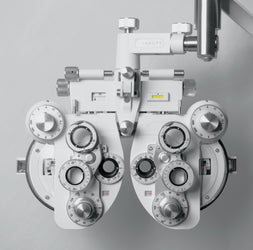Blurry vision? Headaches? Trouble focusing at night? You might be experiencing astigmatism—one of the most common (and most treatable) vision conditions.
Don’t worry, though—it sounds more intimidating than it is. Here’s what you need to know.
What Is Astigmatism?
Astigmatism happens when the eye’s shape isn’t perfectly round. Instead of being shaped like a basketball, the cornea or lens is more like a rugby ball. This causes light to bend unevenly as it enters the eye, which leads to blurry or distorted vision.
It’s incredibly common and can occur on its own or alongside other conditions like short-sightedness (myopia) or long-sightedness (hyperopia).
Symptoms to Watch For
Astigmatism can show up in a few ways, depending on how mild or strong it is. Common signs include:
✔ Blurry or distorted vision at any distance
✔ Eye strain or discomfort
✔ Frequent headaches
✔ Difficulty seeing clearly at night
✔ Squinting to focus
✔ Tired eyes after reading or screen time
If you’ve been experiencing any of these, it’s worth booking an eye test to get a closer look.
What Causes Astigmatism?
Most cases of astigmatism are simply inherited—you're born with it. But it can also develop or change over time due to:
-
Eye injuries or surgery
-
Keratoconus, a condition where the cornea thins and changes shape
-
Age-related changes in the eye’s structure
The good news? Whatever the cause, it’s manageable with the right care.

What Are the Treatment Options?
The good news: astigmatism can be easily corrected. Your optometrist will recommend the best option based on your eyes and your lifestyle.

|
1. Glasses Prescription lenses that correct the uneven curvature and help light focus properly on your retina. |
 |
2. Contact Lenses Toric lenses are specially designed to fit eyes with astigmatism. Available in daily, monthly, or extended wear formats. |
 |
3. Laser Eye Surgery In some cases, laser eye surgery can reshape the cornea for a more permanent correction. Not everyone is a candidate, but we can refer you for a consultation if you're curious. |
What’s Next?
Astigmatism is nothing to worry about—but it is something to stay on top of. A simple eye test can identify it early and get you on the path to clearer, more comfortable vision.
If it’s been a while since your last check-up—or if you’ve noticed changes in your sight—now’s a great time to book in.








